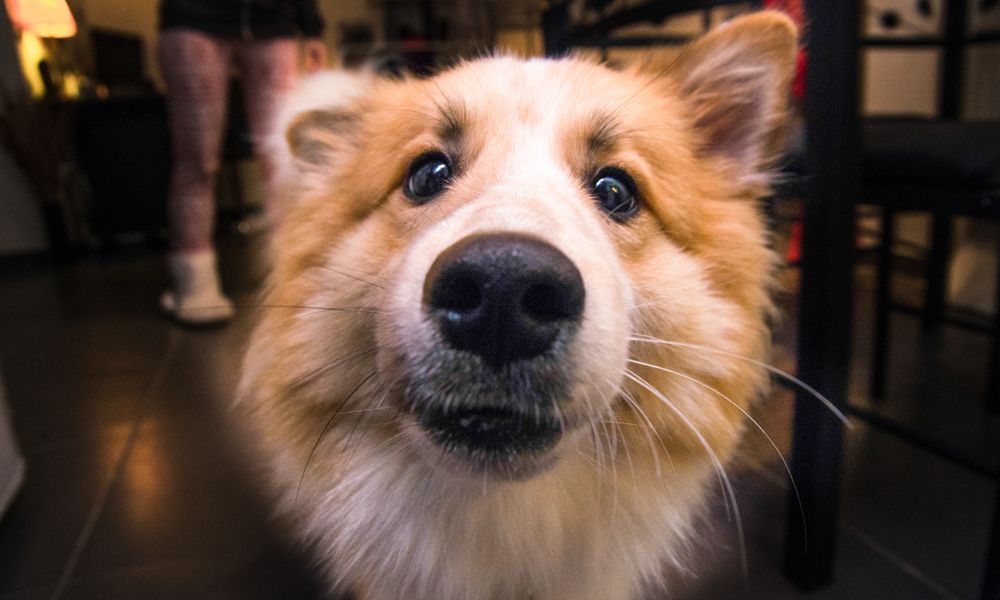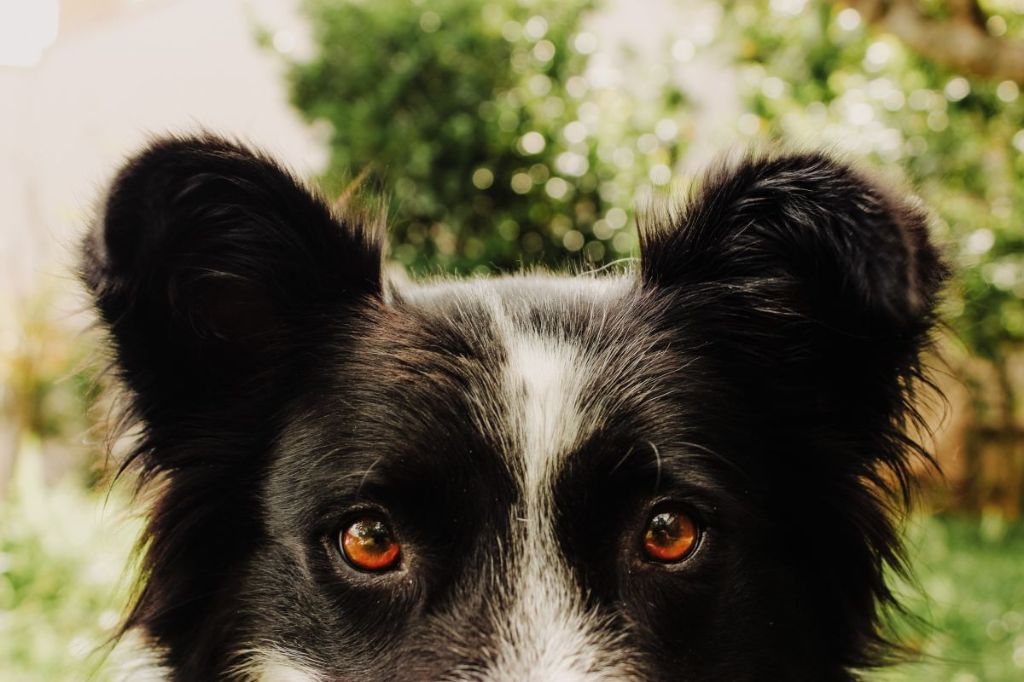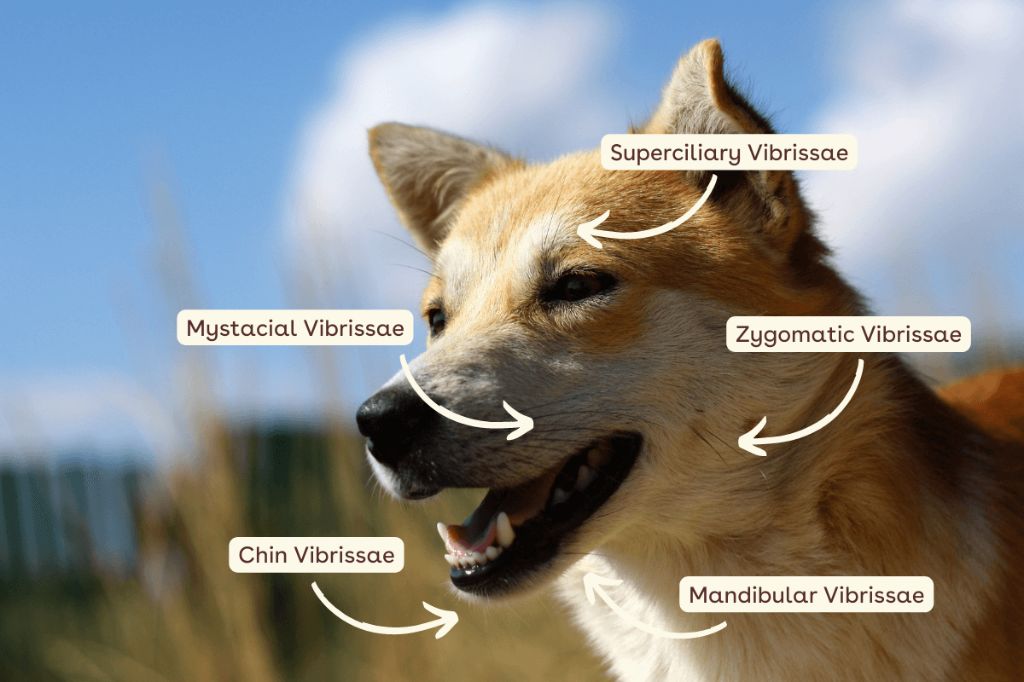Introduction
Dog whiskers are specialized hairs known as vibrissae that grow in patterns on a dog’s face, muzzle, eyebrows, and forelegs. Whiskers serve important sensory functions for dogs, acting like antennas to help them perceive and navigate their surroundings. They detect subtle changes in air currents, vibrations, and movement which provides cues about the speed, direction, and proximity of objects around the dog’s head. This allows dogs to detect and avoid potential hazards or collisions. Whiskers also sense touch, pressure, and texture which helps dogs locate and identify objects even in the dark. Additionally, whiskers protect the eyes and face by acting as a buffer from dust and debris. While all dogs have whiskers, the number, length, and thickness varies between breeds. Understanding the key roles and abilities of dog whiskers provides insight into a fascinating aspect of canine senses and behavior.
What Are Whiskers?
Whiskers, known scientifically as vibrissae, are specialized hairs that grow from hair follicles connected to nerves and muscles in dogs and other mammals. They serve as sensory organs, sending information to the brain about the dog’s surroundings. Whiskers are arranged in highly organized patterns on a dog’s face and body.
The main whisker groups in dogs include:
- Genal whiskers – Longer whiskers on the sides of a dog’s muzzle that aid peripheral vision.
- Superciliary whiskers – Located above a dog’s eyes and help sense objects overhead.
- Interramal whiskers – Shorter whiskers under a dog’s chin that detect objects below its head.
Whiskers are thicker and longer than other dog hairs. They grow from follicles surrounded by blood vessels and nerves that make them extremely sensitive to touch and vibration. Muscles allow whiskers to move back and forth to gather sensory information about the surroundings. This data gets transmitted to the brain to create a sensory map for the dog.
Functions of Whiskers
Whiskers primarily function to aid a dog’s spatial awareness and navigation. The whiskers are highly sensitive tactile hairs that act as sensors, detecting information around the face and muzzle. As noted by VCA Animal Hospitals, “Whiskers help dogs ‘see’ things that lie right under their noses by constantly sending information to the canine brain.”

Specifically, the whiskers detect air currents, vibrations, and objects/obstacles near the dog’s head. This allows the dog to gauge openings and passages to avoid collisions. According to the American Kennel Club, “The vibrissae serve as an early warning device that something is near the face and thus helps the dog prevent colliding with walls or objects.”
Whiskers can sense even subtle shifts in air flow patterns, alerting the dog to movements and approaching dangers. They provide key sensory input about the proximity of objects/surfaces around the face and muzzle. This aids navigation, especially in low light conditions. As PetMD explains, whiskers “help dogs judge spaces to see if they can fit through an opening.”
Overall, the sensitive whiskers detect sensory cues about the nearby environment. This data gets transmitted to the brain, allowing the dog to build a mental map of spaces and objects to navigate safely.
Whisker Numbers Vary by Breed
Different breeds of dogs can have varying numbers of whiskers. This is because whisker count is determined partly by genetics. For example, Siberian Huskies tend to have fewer whiskers than other breeds, with counts ranging from 2 to 6 whiskers per side. On the other hand, Schnauzers and Poodles often have higher whisker counts around 8-12 per side. Mixed breed dogs will likely have whisker numbers somewhere in between.
In general, dogs with shorter muzzles like Pugs, Bulldogs, and Boston Terriers have more densely packed whisker beds and thus higher whisker counts. Dogs with longer snouts like Collies, Greyhounds, and Borzois have more spaced out whisker beds and lower numbers. The reason behind this may be that dogs with shorter snouts rely more on their whiskers for spatial awareness and sensory information since their sight lines are obstructed.
While counts vary across breeds, the general range for most dogs is 6-12 whiskers on each side of the muzzle. However, it’s possible for some individual dogs to fall outside of this range based on their genetics. Monitoring your dog’s whiskers can help determine what’s normal for them.
Average Whisker Count
Most dogs have between 30-40 whiskers in total on their muzzle https://www.rover.com/blog/why-do-dogs-have-whiskers/. This includes about 10-20 whiskers on each side of their nose. The average count can vary slightly between breeds. For example, dogs with longer snouts like Collies may have closer to 40 while dogs with shorter snouts like Pugs may have closer to 30.
In general, the muzzle of an average sized dog will have about 20 whiskers on the left side and 20 whiskers on the right side. However, the exact number can differ even between individual dogs of the same breed.
Whiskers continue to grow throughout a dog’s life, so the number may fluctuate over time. Things like whisker loss due to damage or stress can temporarily reduce the number. But as long as the follicles remain healthy, they should regrow.
Factors Affecting Whisker Count
There are several factors that can affect the number of whiskers a dog has, including:

Breed – Certain breeds tend to have more whiskers than others. For example, schnauzers are known for their long, prominent whiskers. Breeds with wider muzzles like Labradors also tend to have higher whisker counts.
Muzzle shape – Dogs with wider muzzles and snouts provide more surface area for whisker follicles, so they often have more whiskers. Dogs with narrow pointed muzzles like Collies have less space for whiskers to grow.
Genetics – Whisker count and thickness can be inherited genetically. Some individual dogs are simply predisposed to growing more or less whiskers.
Environment – Whiskers can shed from trauma or stress. Living conditions and health can also impact how many whiskers a dog can grow.
Caring for Whiskers
Whiskers are delicate, sensitive structures that require proper care and handling. Trimming or cutting a dog’s whiskers is strongly discouraged, as this can impair their spatial awareness and natural sensory functions. If whiskers are trimmed, they may grow back abnormally or become ingrown.
According to veterinarians, the best practice for whisker care is to simply leave them alone and allow them to naturally shed and regrow over time. Never attempt to pluck, cut, or intentionally remove a dog’s whiskers. Doing so is unnecessary and risks damaging their sensitive nerve endings.
Injuries to whiskers should be treated gently. Avoid pulling on damaged whiskers and allow them to naturally fall out if needed. Keep the area around the whisker follicle clean. Consult a veterinarian if the whisker root remains inflamed or infected.
Regular gentle brushing with a soft bristle brush can help remove dirt or debris on whiskers. Use care not to cut whiskers with clippers when trimming the hair around the muzzle. Also take care not to damage whiskers when putting on or taking off a dog’s collar or harness.
Overall, a dog’s whiskers are delicate tools that allow them to explore the world around them. Proper care means avoiding any trimming or cutting, and allowing their natural growth cycle to occur. Being gentle with whiskers and avoiding injuries will help ensure your dog’s sensory system remains intact.
Whisker Sensory Abilities
A dog’s whiskers are highly sensitive and able to detect subtle environmental stimuli that the dog cannot sense with its regular hairs. This is because the follicles that whiskers originate from are densely packed with blood vessels and nerves, making them function similar to human fingertips.

According to VCA Animal Hospitals, whiskers have many more sensory nerves than regular hairs. The positioning of whiskers on a dog’s muzzle allows them to sense very slight changes in airflow, which alerts them to objects or movements nearby. Even slight pressures or air currents against whiskers can stimulate nerve endings at the whisker’s base, helping dogs detect the proximity of objects around them.
As reported by WebMD, dog whiskers are used as sensory organs that provide important tactile information about their surroundings. They help dogs move around safely, judge openings and passages, locate objects in the dark, and stay aware of dangers that regular vision or hearing may not sense.
Interesting Whisker Facts
Dogs’ whiskers serve many important purposes, but they also have some fascinating traits that make them unique. Here are some interesting facts about dog whiskers:
Whiskers are not fur, but are actually specialized hairs called vibrissae. They contain sensitive nerve endings that send sensory information to a dog’s brain. This gives dogs an expanded “field of view” and helps them detect objects nearby (Source).
The length of a dog’s whiskers is approximately the same width as their body. This allows them to gauge whether they can fit through an opening before trying to pass through. Longer whiskers means the dog has a wider body (Source).
Whiskers tend to be thicker and longer on male dogs than females. Dogs that hunt frequently like Terriers tend to have more whiskers than less active breeds (Source).
While whiskers can be a handsome trait, dogs don’t need whiskers for attractiveness. Their key purpose is sensory.
Whiskers should never be cut as a cosmetic practice. Trimming them interferes with a dog’s spatial awareness and sensory abilities.

If whiskers are damaged or fall out, they will eventually grow back fully. But dogs rely heavily on their whiskers, so injuries impact them until regrowth occurs.
Conclusion
In summary, whiskers play an important role in a dog’s sensory abilities. They help dogs gather spatial information and detect movements in their surroundings. While all dogs have whiskers, the number can vary significantly between breeds. On average, most dogs have around 12 whiskers on each side of their muzzle. The exact count is determined by factors like the dog’s breed, age, and health. Proper care should be taken not to cut or damage whiskers, as they are connected to sensitive nerves. While serving practical functions, whiskers also give dogs their signature look that owners know and love. After reading this overview, you should now have a better understanding of the purpose and variability behind dogs’ whiskers.